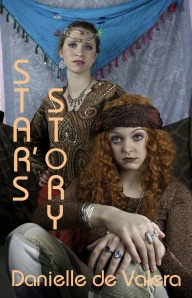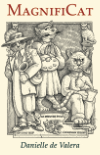This Australian day of remembrance always reminds me of my Uncle Charlie, one of the many uncles on my mother’s side and the one I knew best when I was growing up; he and my mother were close siblings in that large Australian-Irish family of twelve children.
Charlie got into World War I at the age of 16. Unlike my father who escaped from the dairy farm in Palmerston North at 17 by joining the US merchant navy “when the old man’s back was turned”, Charlie did the whole thing legitimately. After his older brother Dave had joined up, Charlie drove the family mad, pestering them to let him go, too. “You’re too young,” they said. “And you’re not strong enough.”
Charlie couldn’t make himself any older, but he could work on the other objection. From then on, locals were treated to the spectacle of Charlie hanging from various tree branches around the shire, doing pull ups between chores on the orchard. He made every dinnertime a nightmare for the family; there were 13 of them now with Dave gone — 7 brothers, 4 sisters and the long suffering parents. In the end, Daniel Doyle and Clare Donovan Doyle (not that she ever called herself that) gave way and signed the papers to let him go, hoping Dave, who was much older, would be able to keep him safe over there. (The Australian military kept brothers together.) Charlie celebrated his 17th birthday in London.
As far as I understand it, he wasn’t a part of the unsuccessful Gallipoli campaign that spawned the holiday Australians observe today: Anzac Day. Where he was and what he did over there in the trenches, I have no idea; he never spoke of it. He spoke freely though of his search for relatives of the family in Ireland, and I remember once seeing a photograph of him standing with a group of people outside a thatched house somewhere in Cork.
The only person he ever talked to about his war experiences was my father. And that was only after Dad had joined the army in WWII and had gone over the Kokoda Trail in New Guinea. On the few occasions that he ever got leave, he and Charlie would sit up in the kitchen drinking rum into the night, long after everyone else had gone to bed. Looking back on it now, I realise just how much comfort Charlie must have been to my father, helping him to debrief from the ongoing experiences of that war in the Pacific.
Back in 1919 after WWI ended, Charlie and older brother Dave were on their own. Like thousands of other young men fortunate enough to return home to Australia physically unscathed, they were suffering from post-traumatic stress, a phrase unknown at the time.
 Pine Islet Tower [Pine Islet Preservation Society]
Pine Islet Tower [Pine Islet Preservation Society]
At first, he took a job as a lighthouse keeper at Pine Islet, his way of trying to come to terms with everything that had happened to him. Older brother Dave, who’d also returned unscathed, simply became an alcoholic and remained one until the day he died. Neither of them ever married. And neither of them marched on Anzac Day. “All the marching in the world won’t bring them back,” Charlie said to me once with tears in his eyes. It was the only time I ever saw him cry.
All his life, Charlie kept a framed photograph of a young woman on his dressing table. She was no beauty, I always thought with the harsh judgement of youth, and she was rather stout — still the fashion in that early 20th century Georgian era before the coming of the Roaring Twenties, when boy-slim became the mode. I gathered from my mother that Charlie” had been sweet on her” before he went to the war, and that she had married someone else while he was away. Young women married young in the country in those days. Obsession and suicidal depression ran in that 1st generation Australian-Irish family, but Charlie picked himself up, lived an organized life with a job in the telephone exchange, kept his little house spic and span and never ever, ever drank too much.
There are so many things now that I wish I’d asked him when I had the chance. But I was too young to understand that nothing lasts forever and elders won’t always be around. If you’ve got an Uncle Charlie in your life, better ask him those questions while you still can.









 http://www.amazon.com.au/dp/B00VBZQ8FY
http://www.amazon.com.au/dp/B00VBZQ8FY






